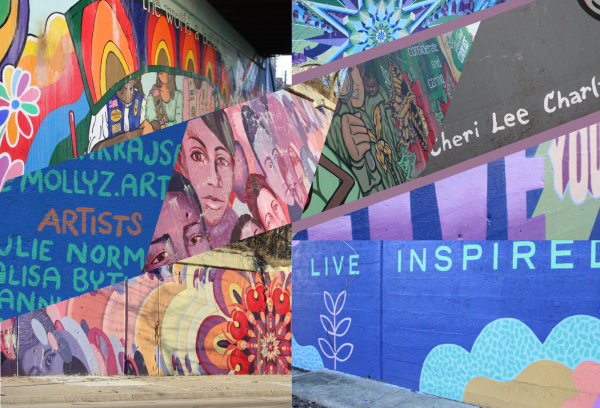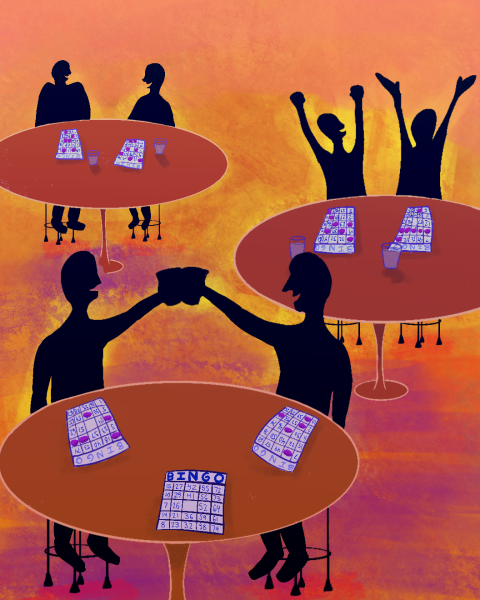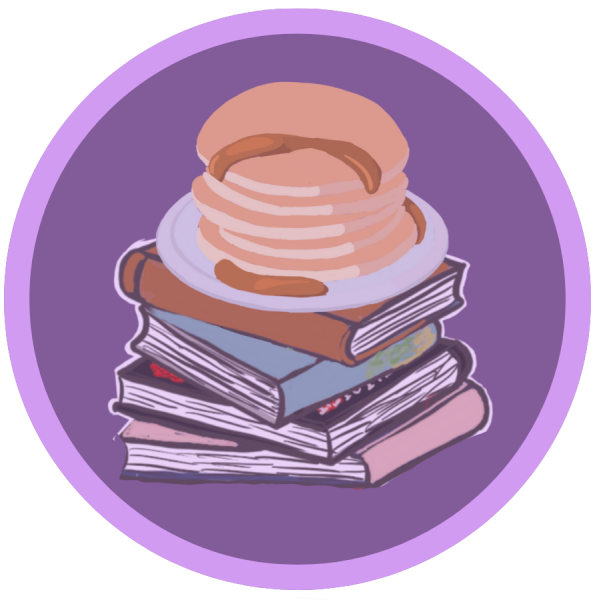Individualizing instruction: ‘student-centered’ special education
November 14, 2022
Fifteen pages. As Claire Smith* persisted through the fatiguing eighty-five minutes of her AP Language block, her hazel eyes fixated on two words resting on the screen of her Chromebook: fifteen pages. The colossal demand attached to her junior research paper tormented her and she began to feel herself disconnect from the classroom surrounding her.
“It’s an overall sense of being so overwhelmed and so anxious. It’s a lot of anxiety to the point where it’s paralyzing. It’s so much to think about at once that I can’t approach it because that’s just terrifying, I guess,” Smith pauses for a moment while recounting her emotions. “It’s, it’s, it’s … the only way I can describe it is just paralyzing.”
Over a year earlier, Smith had been given a 504 plan—a list of accommodations available to legally qualified students in order to promote academic success and prosperity. After submitting proof to the school of her diagnosis, Smith received approval for a 504 plan, which later entailed a Google Meet with her mother, her 504 coordinator and all of her teachers to draft the details of her new learning plan. Smith describes the meeting, recalling how all of her teachers took turns listing the accommodations that they would grant Smith in their class in order to determine what her 504 plan would entail.
“Especially online”—referring to remote learning—“it was super impersonal. My teachers didn’t know me at all. I thought that was a little unfair,” Smith expresses. “Also, I feel like a lot of teachers don’t really take it that seriously or they don’t think it’s that pressing of an issue, so they will undermine my needs and they won’t give me the things that I need in class. They’ll give me, like, the bare minimum stuff.”
Smith’s learning plan is far from rare. ETHS has over 3,500 students roaming its halls every day, attending classes, and completing work, and many of these students are part of ETHS’ multi-dimensional special education program. In addition to 504 plans, the special education program guarantees Individualized Education Plans (IEPs) to students who have disabilities that require individualized services. Unlike 504 plans, which just include a list of accommodations to benefit a student’s ability to learn, IEPs provide specialized instruction that differs from student to student.
“We have over 400 students with IEPs, or Individualized Education Plans that we write for students who are eligible for special education,” says Deanna Gill, the ETHS Assistant Director of Special Education.
Naturally, the program has warranted mixed responses. Some students, like Smith, are dissatisfied with their schooling experience, while others are pleased with the outcomes of their educational adjustments.
“I’ve been in situations where schools have handled [my IEP] horribly, and ETHS has done a really, really good job of making people feel welcome, especially with our large Special Education Department,” student Gail Brooks* shares.
Brooks’ contentment is, in part, due to the process of IEP formation evolving over time to be more inclusive and helpful.
“We make sure we’re collaborative with students and families to make sure that they are part of writing their IEP. We offer professional development for our staff, and we started the special education Parent Advisory Committee, to hear from our parents about what they need. We also partner with our parents in various ways throughout the year to make sure that their student’s needs are met,” Gill says.
However, many students who feel as though they require this individualized assistance face difficulty while attempting to access it.
“Sometimes people are surprised that it is so difficult to get what they view as absolutely and clearly necessary for their child. They’re surprised that there is so much opposition to what they themselves see as a clear need. Often, there’s a dichotomy where the family is seeing the child really struggling and the school says, ‘We don’t see that,’” says Jill Calian, an Evanston attorney who works in special education law.
The process of accessing special education programs and accommodations is filled with complex legal jargon and rules that can be difficult to understand. Parents have to play a large role in this process, but as their students grow, it becomes especially important that the students are involved and aware of how they can advocate for themselves.
“The goal is always for the young person to be able to advocate for themself, and I think schools are getting better at understanding that. For example, the year that they turn fourteen and a half, they start to participate in their own IEP meetings, and there is a movement towards not only putting them in the meetings, but being sure that they can present their own statement about their own needs and desires,” explains Calian.
However, students are only able to demonstrate self-advocacy if schools are willing to listen, and oftentimes schools don’t present their students with the opportunity to have agency in their education and futures. Traditionally, schools have granted students a narrow range of options regarding their educational accommodations; however, ETHS has strived to integrate students into the decisions that form their education.
“The goal is for this process to become much more student-centered, where it’s about meeting students where they are and then also understanding what their long-term goals are, trying to honor what they want to do with their lives. Sometimes in the world of disability, instead of saying ‘What do you want to do with your life? How can we get that on the right path?’ The approach is more like, ‘We have some educational opportunities or we have some employment opportunities. There are these three. Which one?’” says Calian.
Despite the push for greater student autonomy, students continue to be frequently left out of this process, resulting in an impersonal and limited learning plan.
“It was entirely up to the caseworker and my teachers,” Smith recalls the manner in which her plan was crafted. “They asked me a couple questions about, like, if I have a certain part of the classroom I want to sit in, but I felt like that was a little bit of a weird question,it was kind of the only thing I got a say in.”
Not only are students often excluded from the decision making process, but many students in need fail to access an entry into this process all together due to a lack of understanding and awareness surrounding the programs.
“I do feel like in some situations people aren’t aware and … are just like, ‘Oh, [my learning difference] is normal. I can deal with it on my own.’ I feel like it would be more useful if it was easier [to receive an IEP or 504 plan], more known about or [more] accessible for some people,” Sharon Lowe* explains.
Indeed, many people who could benefit from having a 504 plan or IEP miss out on the opportunity to acquire them due to the stigma around learning differences. This is unfortunate, because many of these accommodations are incredibly important for different aspects of the learning experience.
“In my education plan, I’m allowed extended time. I’m also allowed to hear my work back instead of reading my work. … I’m allowed to take a test in a room with pretty much myself and a teacher when it comes to College Board stuff like SATs and PSATs. [Usually,] I don’t really have anything in front of me. Instead, it’s me just answering the questions and then they’ll bubble it in for me,” she says.
Although all of these adjustments benefit classroom experiences, they can come with a frustrating social cost. Oftentimes, the accommodations that come with learning plans are misinterpreted as advantages, which can stem harmful stereotypes surrounding students with 504 plans or IEPs.
“A lot of the time when people hear that I have extra time and like stuff like that, they’re like, ‘Oh, my God, you’re so lucky,’ and sometimes it comes off as a little insensitive because it’s not that I just landed on this 504. I had to actually struggle, and you have to prove to [the school] that you have a diagnosis of why you’re struggling,” Smith explains. “I think [having a 504 plan] is stereotyped as everyone thinks that it would make [school] so much easier … but not everybody needs [these arrangements in] the same way as certain people, and that’s where I feel like the [culture of] insensitivity has come in,” she says.
It’s true that many students believe those with 504 plans and IEPs are “lucky,” but these harmful notions stem from the lack of understanding surrounding the driving forces behind the exigency of these plans. Many students fail to recognize that certain school elements can become insurmountable for students with learning differences.
“You have to follow these rules, conduct yourself in class, sit still for 85 minutes and complete so many assignments in one week for one class. The homework for each night is so much time that I physically just can’t dedicate myself to it,” Smith explains, describing the factors of school that she struggles to endure. “I get mentally tired a lot easier than other people and a lot quicker than other people. Like my brain just physically prevents me from sitting down for that long and like doing that work for that long.”
Although learning adjustments, like 504 plans, can help to minimize the excess obstacles of education as a student with learning differences, they are not a resolution to all educational struggles.
“[School] is easier to cope with, it’s easier to manage with those accommodations, but I still don’t feel like I am learning like everyone is or like I’m keeping up with everyone else.”
When the fundamentals of school grow to be overwhelming, personalized support is key, and teachers are often some of the greatest resources in providing this support.
“I have been graced with some really nice teachers this year, who, especially during tests, they come up to me, and they remind me that I have extra time, that if I need to come in for A.M. support or during lunch that I can, so that’s been good,” she notes.
Individual teacher connections are essential to classroom success, and in a school with thousands of students, like ETHS, students are often held responsible for managing these ties.
“We’re in a big high school. We’re in a big area, where there are a lot of people and a lot of students and a lot of teachers, but I think it’s really important for those students to not just rely on their teachers to give them their accommodations, but to also say, ‘Hey, I need this, like, this is part of my IEP,” Brooks shares.
“There have been a couple times where a teacher was unaware of my IEP needs and therefore didn’t meet them. But communication-wise, most teachers are very apologetic about it and feel horrible, because you wouldn’t want a student that is suffering and having a hard time in class,” she continues.
However, with a well-resourced school like ETHS, teachers are informed of each student’s individual needs and are often dependable for enforcement.
“[My teachers] are all very aware of [my plan], and they know when to enact it or when to use my accommodations,” she says.
Nonetheless, the program still has room for growth, and the first step begins with a school-wide shift. Historically, the special education program has functioned in isolation from the rest of the school, but leaders hope to bridge that divide.
“I think some ways that we, as a whole school can make that better is by offering inclusive environments, creating community around individuals with disabilities and getting to know our individuals with disabilities and what they need so that we can better support that effort of inclusion and community,” says Gill.
In building an environment that best works for its students, complex conversations about inclusivity arise; about how and when students in restrictive placements should be included in the general education pool. In special education, there is a spectrum of possible placements. Restrictive placement refers to having less opportunity to be with peers in general education. More restrictive placements–separate classrooms, separate schools, residential schools–can be great settings, giving students more access to special education teachers, therapists and specialized curriculums.
“There’s a real pendulum swing in terms of inclusion. For example, a few years ago, there was a real swing towards including all students with disabilities in general education as peers. There’s sometimes drawbacks to that and schools occasionally end up having to back off of that, because they are required under the law, not just to provide education in the least restrictive environment, but also to provide a spectrum of possible placements. Occasionally, students do need placements that would be considered more restrictive. Those settings are appropriate for some students just indisputably. I see a pendulum swing that ‘We’re going to include everybody,’ and then ‘Oh, maybe that’s not such a good idea,’ and then ‘We’re going to include everyone.’ It goes back and forth,” says Calian.
Despite the manner of the approach, the ultimate goal is to increase inclusion surrounding the disabilities community. Helping all students engage with the Evanston community, whether in restrictive school settings or modified learning plans, is vital.
“People like Benji shouldn’t be at home. They belong everywhere else, just like anybody else. So I think that getting the kids into the community is twofold. It serves the kids who are learning, they’re working on real-life skills. Then also, they’re being seen, they’re out there. Somebody’s not shopping for them. They are shopping,” says Christie Williams*, mother of sophomore student Benji Williams*.
Students in the special education program are starting to become more involved in the rest of the school and the Evanston community. There are so many more programs that allow students to get to do typical hobbies, while also having them tailored to their needs. With programs like Wildkit Buddies, students are able to sign up and meet with other students not a part of the special education program and together they go on different fun outings.
“He’s doing keyboarding and then they have an arts class, so it’s half music, half art. When we first moved here there was just like so much that was available. We’re like, ‘Okay, I guess we’re just kinda gonna jump in and do everything.’ He did sit through Evanston special rec, the city recreation special education. He did cooking classes, powerlifting, swimming, volleyball and bowling,” says Williams in reference to her son.
Helping the student body as a whole better understand the scope of services and activities offered to special education services is also important. Programs that increase awareness are valuable.
“I think that it is important for libraries to have books that focus on people with disabilities in the same way that we have to focus on a whole variety of human experiences and build curriculum around that as well. ETHS has started Abilities Awareness Week which is a good idea, generally. I would prefer that they be called something different than Abilities Awareness, something more like Disability Pride or Advocacy for Disabilities, and have the focus to be a little bit different,” says Calian.
Abilities Awareness Week was enacted for the first time during the 2021-2022 school year as a part of ETHS’ Social Consciousness Series. This event is just one of many ways ETHS hopes to expand on the support available to students with disabilities.
“We are constantly thinking about what the continuum of services is for special education students, and how we really make ETHS more inclusive. That’s always a work in progress; we live in a very ablestic society, and ableism is real. Even amongst our well-meaning efforts, it’s still contingent to provide inclusive opportunities for students in special education,” Superintendent Marcus Campbell expresses.
A modern increase in societal awareness surrounding the disability community has been essential in allowing for these resources to continue to blossom.
“I think that there is an understanding, certainly that people with disabilities have a lot to offer the world in a way that there wasn’t 40 years ago when there was a lot more institutionalization of students of young people with disabilities,” says Calian.
It’s true that people with disabilities have way more opportunities now than ever, and one of the most important elements of that is having the chance to get the education that they need.
“Having these accommodations doesn’t make you less of a person. It makes you so that you don’t have to…force yourself to focus for a certain period of time. It’s okay to have these accommodations, because they [don’t mean] you’re stupid or you’re slow. They’re to help you so that you aren’t fighting yourself,” Lowe concludes.



















